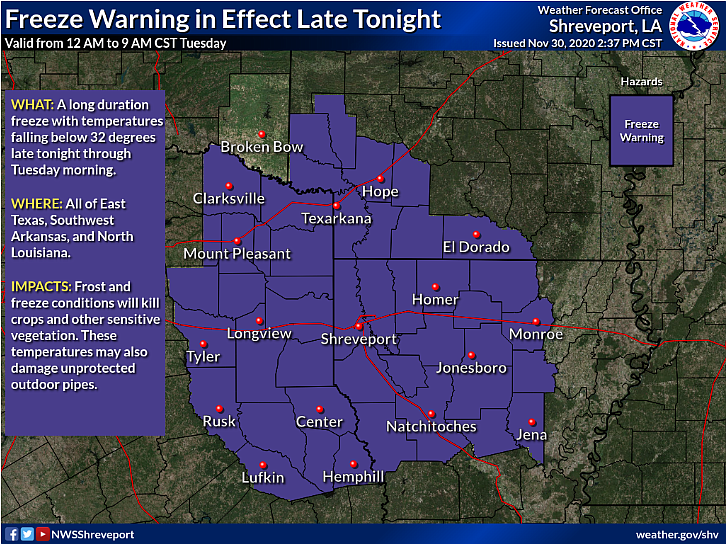As the last month of the year begins, an abrupt change of weather has come with it. According to data in El Dorado from the National Weather Service, the month of November saw daily maximums in the high 60s and low 70s up until the 28th, which had a reported maximum at 56 and a minimum of 45. The 29th saw a maximum of 48 and a minimum of 42 and the 30th had a maximum of 55 with a minimum of 25.
A freeze advisory was issued by the National Weather Service on November 30 for much of southwest Arkansas and through the borders of the states adjacent to it. Columbia County residents should expect a high of 53 throughout today and a low of 36 later in the night.
With the cold weather quickly approaching and freezing temperatures expected, the National Weather Service has some tips that could save a life or make one think twice about their trip into the cold. One of the most common winter weather dangers for inner-city motorists is black ice. Black ice is a danger caused by freezing temperatures after a rain or snowmelt. Black ice can form on any road as well as along curbs and drainage areas due to rain or melting snow. It is more prevalent at night, but black ice may persist through the morning.
Frozen bridges are another concern highlighted by National Weather Service. With no ground underneath these structures, they can be surrounded by cold air during freezing temperatures.
The freezing usually isn’t uniform, with shaded areas more likely to be icy while sunny parts aren’t. It is best to slow down before approaching a bridge because changing speeds while on ice can be dangerous.
Large ice storms are a danger Columbia County residents have not faced in over a decade, yet the National Weather Service still recommends preparation for communities expecting freezing temperatures. They recommend keeping a week’s worth of food and prescriptions prepared, that devices should be charged and to not park your vehicle underneath any trees.
The last danger that residents could face is keeping warm during a power outage. The National Weather Service recommends closing blinds and curtains, closing off rooms, wearing layers of clothing and stuffing rags or towels in cracks under the doors.

